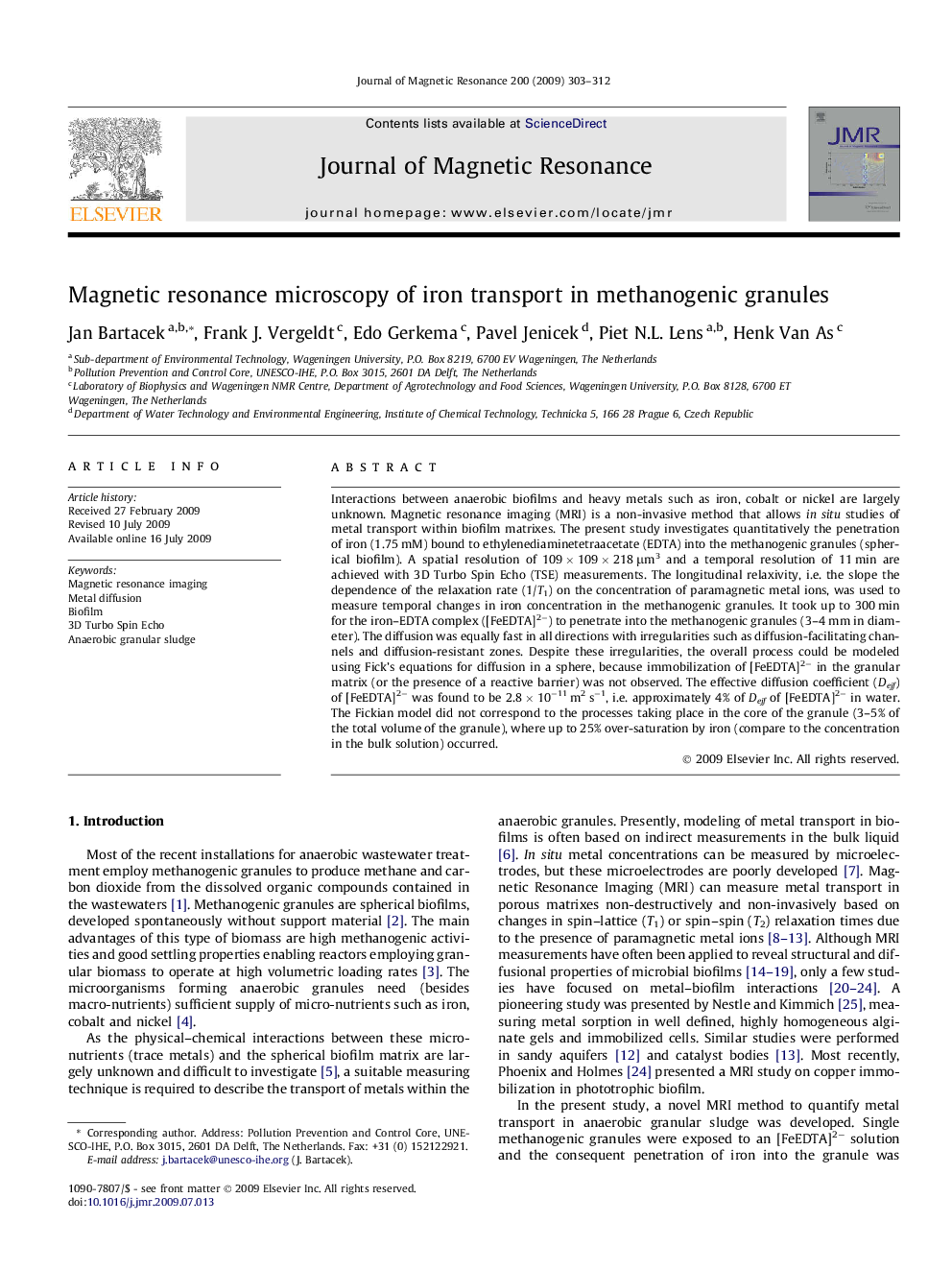| Article ID | Journal | Published Year | Pages | File Type |
|---|---|---|---|---|
| 5406810 | Journal of Magnetic Resonance | 2009 | 10 Pages |
Abstract
Interactions between anaerobic biofilms and heavy metals such as iron, cobalt or nickel are largely unknown. Magnetic resonance imaging (MRI) is a non-invasive method that allows in situ studies of metal transport within biofilm matrixes. The present study investigates quantitatively the penetration of iron (1.75 mM) bound to ethylenediaminetetraacetate (EDTA) into the methanogenic granules (spherical biofilm). A spatial resolution of 109 Ã 109 Ã 218 μm3 and a temporal resolution of 11 min are achieved with 3D Turbo Spin Echo (TSE) measurements. The longitudinal relaxivity, i.e. the slope the dependence of the relaxation rate (1/T1) on the concentration of paramagnetic metal ions, was used to measure temporal changes in iron concentration in the methanogenic granules. It took up to 300 min for the iron-EDTA complex ([FeEDTA]2â) to penetrate into the methanogenic granules (3-4 mm in diameter). The diffusion was equally fast in all directions with irregularities such as diffusion-facilitating channels and diffusion-resistant zones. Despite these irregularities, the overall process could be modeled using Fick's equations for diffusion in a sphere, because immobilization of [FeEDTA]2â in the granular matrix (or the presence of a reactive barrier) was not observed. The effective diffusion coefficient (Dejf) of [FeEDTA]2â was found to be 2.8 Ã 10â11 m2 sâ1, i.e. approximately 4% of Dejf of [FeEDTA]2â in water. The Fickian model did not correspond to the processes taking place in the core of the granule (3-5% of the total volume of the granule), where up to 25% over-saturation by iron (compare to the concentration in the bulk solution) occurred.
Related Topics
Physical Sciences and Engineering
Chemistry
Physical and Theoretical Chemistry
Authors
Jan Bartacek, Frank J. Vergeldt, Edo Gerkema, Pavel Jenicek, Piet N.L. Lens, Henk Van As,
